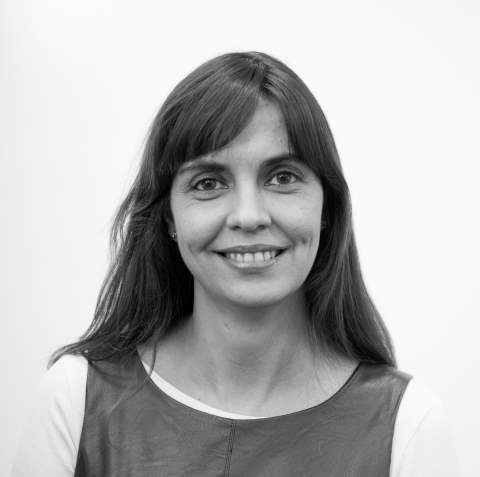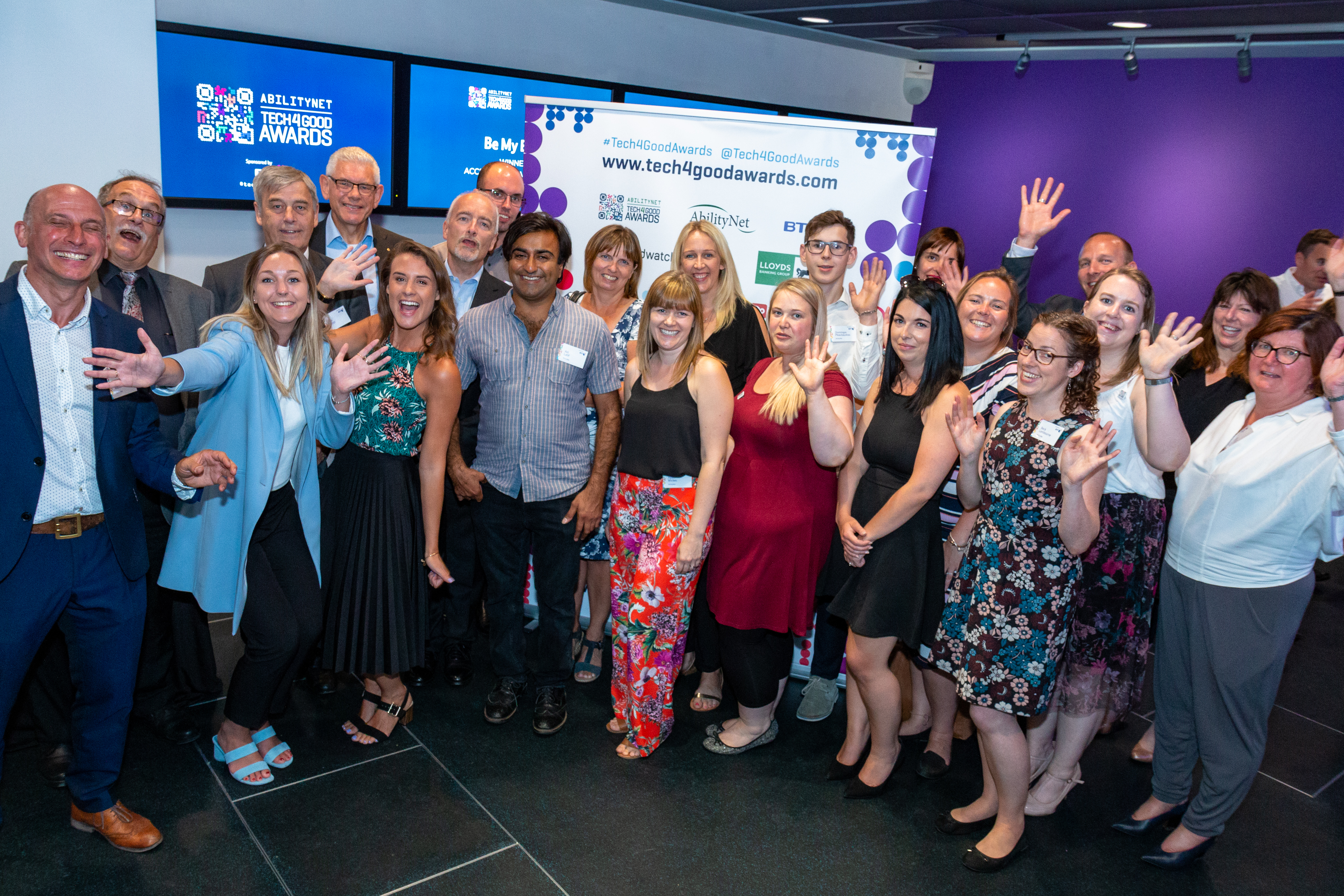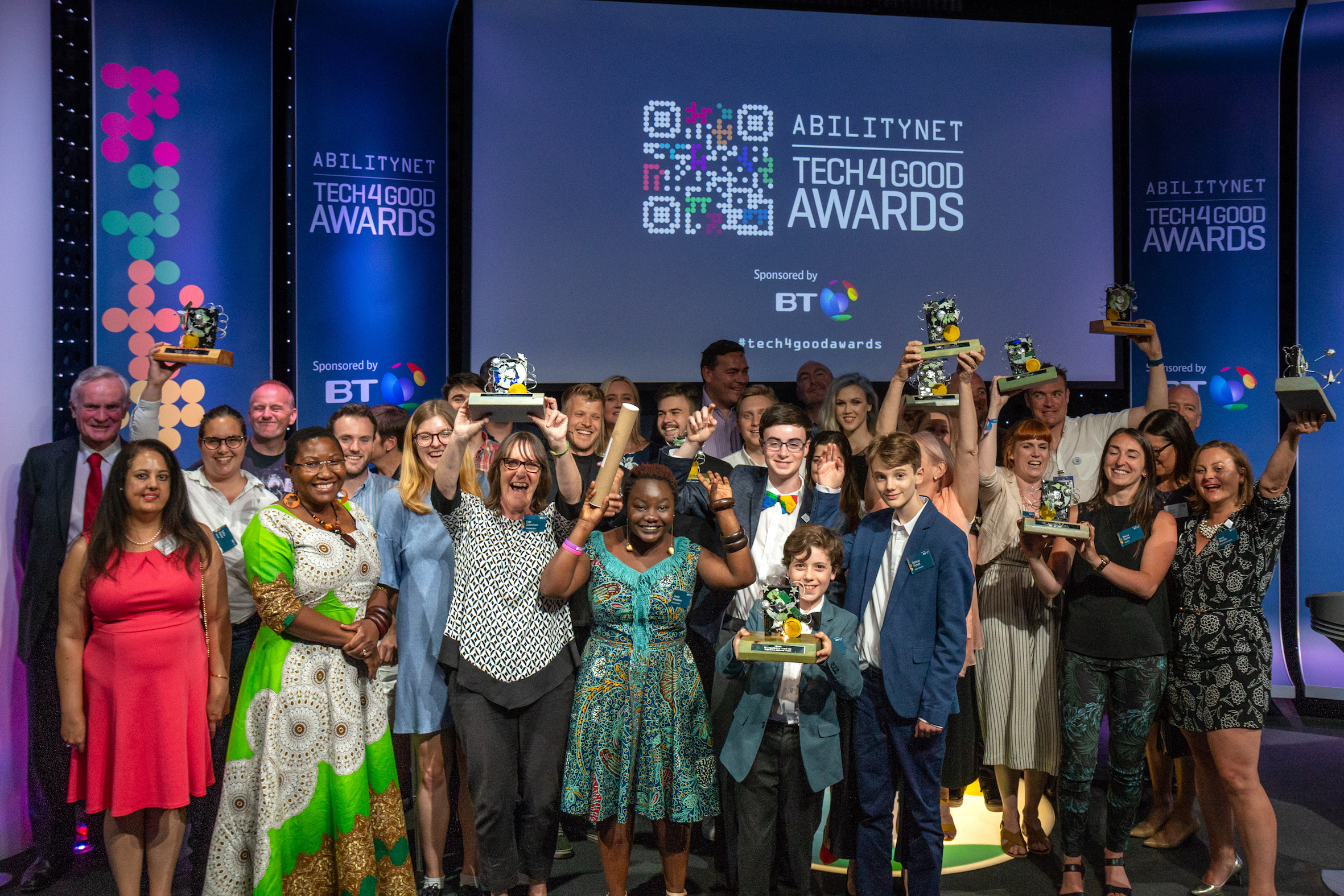 I was present at the 8th annual AbilityNet Tech4Good Awards Ceremony, which took place just 10 days after I joined AbilityNet as an Accessibility and Usability Consultant - so a great opportunity to meet some of my colleagues from different locations and attend one of our major events!
I was present at the 8th annual AbilityNet Tech4Good Awards Ceremony, which took place just 10 days after I joined AbilityNet as an Accessibility and Usability Consultant - so a great opportunity to meet some of my colleagues from different locations and attend one of our major events!
The event was very successful and it was a pleasure to hear about the people and projects that are using digital technology to improve the lives of others and make the world a better place. In this post I've shared eight things I learned at the 2018 AbilityNet Tech4Good Awards Ceremony:
1. Technology is changing lives
Liz Williams from BT mentioned this idea at the beginning of the ceremony. Reading the stories of the 35 amazing finalists on the Tech4Good Awards website convinced me that this is an amazing truth: technology is making life easier, safer and better for all of us. Finalists like Be My Eyes or TapSOS deserved a prize, and so I was pleased when they won, but as Liz said "...all our finalists are winners".
2. Young talent is mind-blowing
I was surprised to see young people in the reception area before the Awards Ceremony started. Before the event I had read about the finalists in the BT Young Pioneer Award category, but I hadn’t realised the finalists were THAT young. When the Awards Ceremony started I realised that these young people have extraordinary minds. I think it’s fair to say that we were all moved by Lewis Hine's story - the teenager that founded Friend Finder to bring together students that miss school due to long-term health conditions or disability. The team that won the 2018 BT Young Pioneer Award, Water Watcher, impressed us all from the stage when speaking about their project to reduce water wastage worldwide.

3. It’s not easy to be a judge
No thank you, I don’t want to be a part of the judging for next year. How can you choose the best project from each category, when all the finalists are so good? The Digital Volunteer of the Year Award and the Comic Relief Tech4Good for Africa Award are just two examples of extremely challenging categories to choose a stand-out winner from.
4. You can vote for your favourite by waving a glowstick
When I first saw them, I thought they were candies. ‘How unusual...’ I thought. But no, they were glowsticks and we used them to choose who we wanted to receive the Winner of Winners Award. We all enjoyed the opportunity to participate in the voting and there was much laughter.
5. You can win a trophy and give it away
Related to my previous point, Christian Erfurt from Be My Eyes won the Winner of Winners Award and surprised us all with an admirable gesture: he gave the trophy to Lewis Hine ‘for his important work with Friend Finder.’
6. ‘Rings don’t fall off to the floor’ at AbilityNet
I’m not sure if there’s an equivalent expression to this crazy Spanish idiom. If your rings don’t fall to the floor it means that you’re happy to do any task that might be considered minor, whatever your seniority. I didn’t see a single ring on the floor during all the event. Everybody was working with Mark Walker, the event organiser and also the Head of Marketing and Communications at AbilityNet, to make sure the event ran as smoothly as possible. Everyone pitched in, no matter the seniority, no matter the task. I’m pleased to work in such a collaborative environment.

7. Networking is better around a chocolate fountain
Gary Moore, the CEO of AbilityNet, mentioned the chocolate fountain whilst on stage, and in my opinion it was truly the star of the delicious catering that was on offer after the event. There’s no better way to start a conversation than by sharing your thoughts about the perfect fruit combination to dip into chocolate.
8. It’s such an amazing time!
Kate Russell, who hosted the awards alongside Mark Walker, said it's not often we hear a genuine good-news story about technology. On the day of the Awards Ceremony we heard not one, but thirty-five good-news stories about technology. Big names like Facebook and Microsoft are using artificial intelligence (AI) to improve accessibility for all users. Robotics is going to change the world, like the amazing Small Robot Company in the agri-tech industry. Digital skills are reaching people that had little access to technology before. The future is promising, and we’ll get another opportunity to reflect on this again as we follow our 10 winners post-win and look forward to the next AbilityNet Tech4Good Awards in 2019. Are you ready?

Find out more:
For more information about the AbilityNet Tech4Good Awards and this year's winners read the official AbilityNet Tech4Good Awards winners announcement on our website.
You can read more about our 2018 winners and finalists in a feature on the Guardian website.
For other details about the Awards visit the AbilityNet Tech4Good Awards website.
If you're feeling inspired to use your digital skills to transform the lives of other people then check out our current vacancies and volunteer opportunities.
